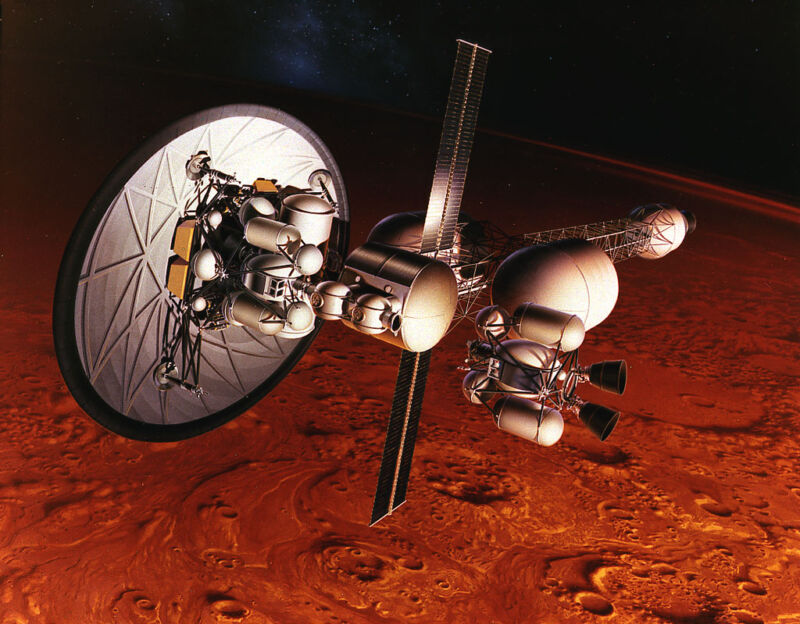The US military is getting serious about nuclear thermal propulsion

Enlarge / This 1960s concept illustrates a nuclear-thermal rocket with an aerobrake disk as it orbits Mars. (credit: NASA)
There are many ways to get around space, but most of them are pretty slow. This is why, even when launching at an optimal time, a spacecraft leaving Earth requires about six months to reach orbit around Mars.
For decades, many rocket scientists have looked to a propulsion system powered by a nuclear reactor as the fastest practical means of getting to Mars and other places in the Solar System more quickly.
The German engineer who defected to the United States after World War II, Wernher von Braun, recognized the potential of nuclear thermal propulsion even before his Saturn V rocket landed humans on the Moon with chemical propulsion. Eventually this led to a project called NERVA, which stood for Nuclear Engine for Rocket Vehicle Application. It was eventually canceled to help pay for the space shuttle.
Read 11 remaining paragraphs | Comments